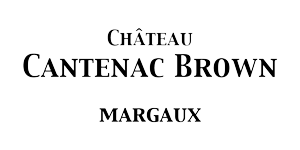Chateau Cantenac Brown, Grand Cru Classé from 1855, in Margaux was founded 200 years ago by a Scottish John Lewis Brown. Recognizable by its spectacular Tudor-style chateau, Cantenac Brown is still family owned today and has announced the construction of a new, unique winery made entirely of raw earth.
Decanting wine is an important gesture before sharing a tasting moment. However, these two techniques do not address the same wines and require different accessories. Decanting a young wine is more suitable and easy when they need a lot of oxygenation. Conversely, decanting older wines for which too much contact with oxygen could be dangerous and requires the best tools. In this article, the teams at Château Cantenac Brown answer your question: how should I decant my wine?
What is the difference in decanting wines?
There are two different operations in decanting wines. Thus, young wines can be decanted in order to experience an important oxygenation. This decanting can last several hours to give the wine the opportunity to express all its organoleptic qualities. You can also decant older wines to limit the presence of deposits at the time of tasting but this operation requires to make sure you allow the least contact possible with oxygen.
Whether you’ve paired wine and fish or wine and prime rib, you’ve achieved the perfect food and wine pairing. It would be a shame to ruin it by not taking care of your wine service. So we suggest you learn more about how to decant your wine.
Decant the youngest wines
Decanting is the process of putting wine in a carafe. To decant the wine is more reserved for the youngest bottles. Indeed, the wine reacts to the contact of the air. Thus, the passage in the carafe makes it possible to oxygenate the wine quickly and at a high level and thus to make it express all its flavors. In addition, decanting generally softens the tannins in the wine, which are often very present in younger wines.
To decant the wine, we recommend using a very wide decanter. This will increase the contact surface between the wine and the air and thus allow more rapid oxygenation of the wine.
Decant the oldest wine
You can also decant wine by removing the deposit present in the wine without letting it come into contact with the air. To do this, you need to open the wine after letting it sit upright for a few hours. The deposit in the wine should have slid to the bottom of the bottle. You can then transfer the liquid from your bottle to your decanter. Purists place a candle between the bottle and the decanter. The light of the candle allows you to check, through the bottle, that no deposit is slipping into your decanter.
To decant the wine, we recommend using a decanter that can be closed and that minimizes contact with the air. This low contact with the outside air will slow down the oxygenation of the wine, which could destroy the aromas of your delicious nectar.
Decanting white wine
Although this gesture may sometimes seem foreign, it is totally possible to decant white wine. In particular, young and complex white wines are perfectly fitting to decant. This makes them open up completely and express their organoleptic qualities. This will absolutely be the case for Alto de Cantenac Brown.
For how long should I decant my wine?
The decanting time of wine naturally depends on the wine you wish to taste. For a young wine, with strong tannins, you can choose to decant for several hours. On the other hand, for a lighter red wine, a few dozen minutes may be enough to make it evolve.
Decanting white wine can be done at the time of service. Indeed, the passage in the carafe will only have a marginal effect. Thus, you do not need to anticipate this preparation to serve the white wine well.
Finally, for the oldest wines, you can proceed to this operation a few minutes before your tasting. Indeed, prolonged contact between old wine and oxygen can make it sour or make all its aromas disappear. We, therefore, recommend that you place the wine vertically a few hours before tasting and decant it only ten minutes before serving it.
You are now specialists in decanting wine, whether they are young or old. We only have to wish you a wonderful tasting.


